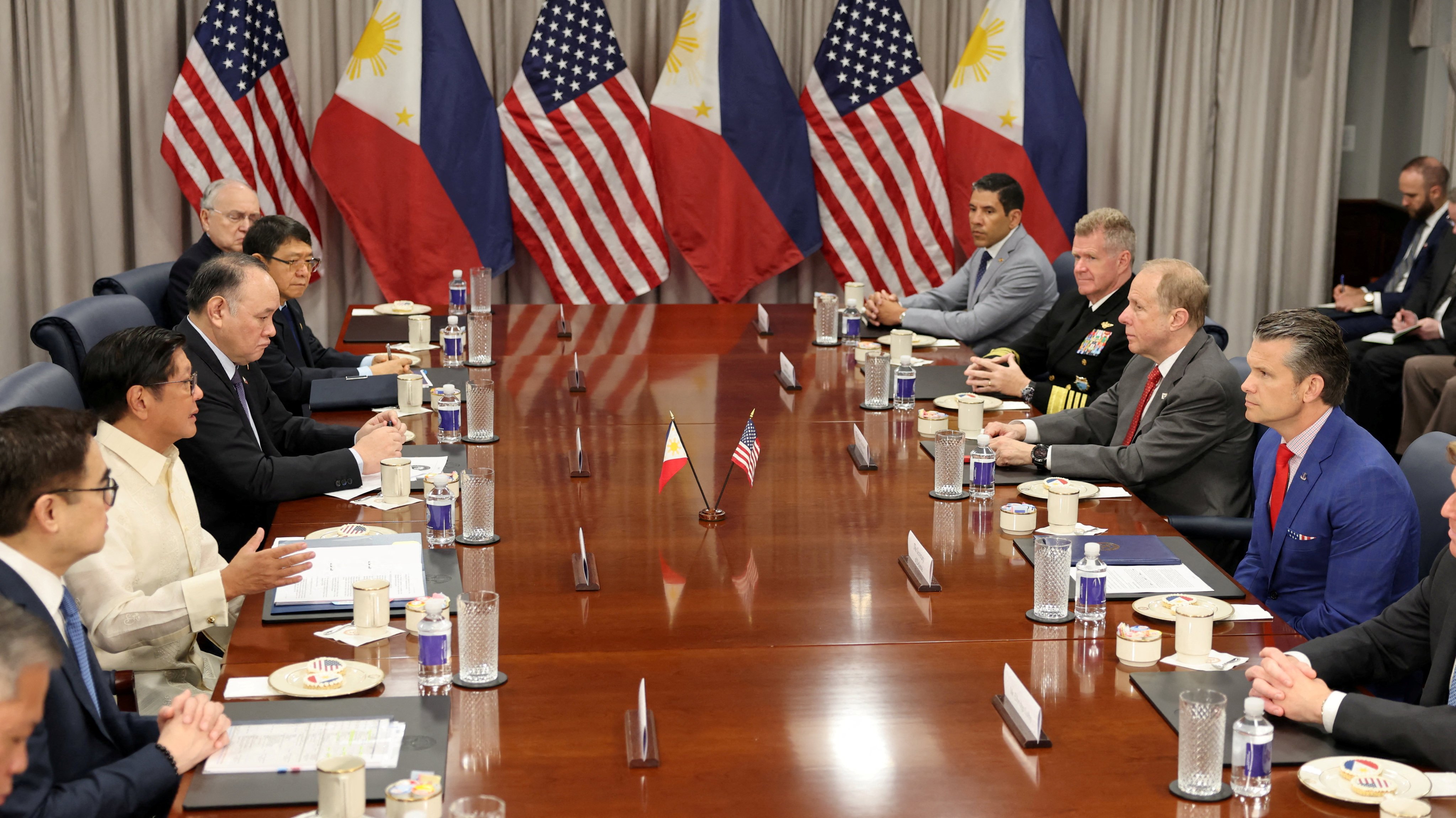Marcos seeks to seal trade pact and strengthen security ties in Trump meeting
Philippine president hopes for a grand bargain, but sources say US is reluctant to merge trade and security deals

When Philippine President Ferdinand Marcos Jnr sits down with US President Donald Trump for bilateral talks on Tuesday, his top priority will be to secure a trade deal while reinforcing Manila’s security alliance with Washington against Beijing.
Such a grand bargain, however, appears to be a long shot.
The Philippines has sought to link security and trade in a broader strategic package, but they have faced resistance from the Trump administration, which is reluctant to merge the two tracks, according to people familiar with the situation.
Trade negotiations have intensified since Trump threatened this month to impose additional tariffs of 20 per cent on Philippine imports if a deal is not completed by August 1. A team of negotiators from Manila flew to Washington last week ahead of Marcos’ arrival on Sunday.

A final agreement could be announced during the state visit, which concludes Tuesday and makes Marcos the first Southeast Asian leader invited to the White House during Trump’s second term.
“I expect our discussions to focus on security and defence, of course, but also on trade,” Marcos said on Sunday in a pre-departure briefing.
“We will see how much progress we can make when it comes to the negotiations,” he added, noting that he would press Trump about “the changes that we would like to institute so as to be able to alleviate the effects of a very severe tariff schedule on the Philippines”.
Addressing senior government and military officials along with the press, Marcos said that during this visit, he would “reaffirm our commitment to fostering our long-standing alliances as an instrument of peace and a catalyst of development in the Asia-Pacific region and around the world”.
On Monday he met with US Defence Secretary Pete Hegseth, and later in the afternoon with US Secretary of State Marco Rubio. During the discussions, tensions in the South China Sea were a focus.
According to the Pentagon, Hegseth assured Marcos that the treaty “extends to armed attacks on our armed forces, aircraft, or public vessels, including our coastguard, anywhere in the Pacific, including the South China Sea”.
“We do not seek confrontation,” Hegseth said without naming China, “but we are – and will remain – ready and resolute”.
The State Department said that Rubio in his meeting with Marcos also emphasized the “ironclad” US-Philippines alliance as key to Indo-Pacific peace and stability.
Unhandled type: inline-plus-widget {“type”:”inline-plus-widget”}
Since 1951, Manila has had a mutual defence treaty with the US, committing both nations to support each other if either is attacked in the Pacific region.
The South China Sea is a growing flashpoint, with tensions between China and the Philippines, Vietnam, and Malaysia running high over competing claims.
Recent years have been marked by a series of dangerous encounters between Philippine and Chinese coastguards.
According to Sarang Shidore, director of the Quincy Institute’s Global South programme, Manila expects much more favourable treatment in trade compared to countries like Vietnam and Indonesia because of its status as a US military treaty ally “that has executed a major shift under Marcos to converge much more with Washington on countering Beijing”.
The Marcos administration, Shidore said, “sees a clear linkage between economic and security issues, and expects the Trump administration to make significant trade and investment concessions”.
Trump, in his second term, arguably sees trade as a bigger security issue than countering Russia or China militarilySarang Shidore, Quincy Institute
However, the Trump administration, he added, has “thoroughly delinked trade and economic issues with security relationships with practically all allies”.
The US trade deficit with the Philippines widened to US$4.9 billion in 2024, a 21.8 per cent jump from 2023. During his Washington visit, Marcos will also meet with business leaders to promote and accelerate investment.
But Shidore noted that “Trump, in his second term, arguably sees trade as a bigger security issue than countering Russia or China militarily”.
Under Marcos, who took office in 2022, the Philippines has expanded US access to its military facilities, ramped up joint exercises and increased rotational troop deployments.
Last week, the US embassy announced plans for the US Navy to build two repair and maintenance facilities for Philippine military vessels on Palawan – the closest island to Manila-held territory in the South China Sea.
Patricio Abinales, a professor of Asian studies at the University of Hawaii-Manoa, said that Philippine officials could “use China’s assertiveness as a way of convincing the Americans to ease up on the tariff pressures”.
However, he said that any such leverage would depend “on how close defence and civilian officials can work together to craft a Philippine position that fuses both defence and trade interests and whether the Americans would be amenable to this”.
“Like many other nations hit by Trump’s tariff policies, Philippine officials go into the negotiations not sure what to expect,” Abinales noted.
Shidore said that while the short-term US-Philippine security cooperation would continue to strengthen, “much also depends on Chinese behaviour”.
Beijing, he noted, could “exploit the gaps in interests between the United States and the Philippines to its own advantage”.
Shidore added that Marcos also finds his domestic political position “weaker after his fallout with former president Duterte and a relatively poor result in the Philippine midterm election”.
“He needs an economic win,” he contended.
As a result, higher tariffs than those in place before Trump’s return to office would introduce a “structural tension” in the bilateral relationship that could “easily cool relations with the United States in the longer term”.